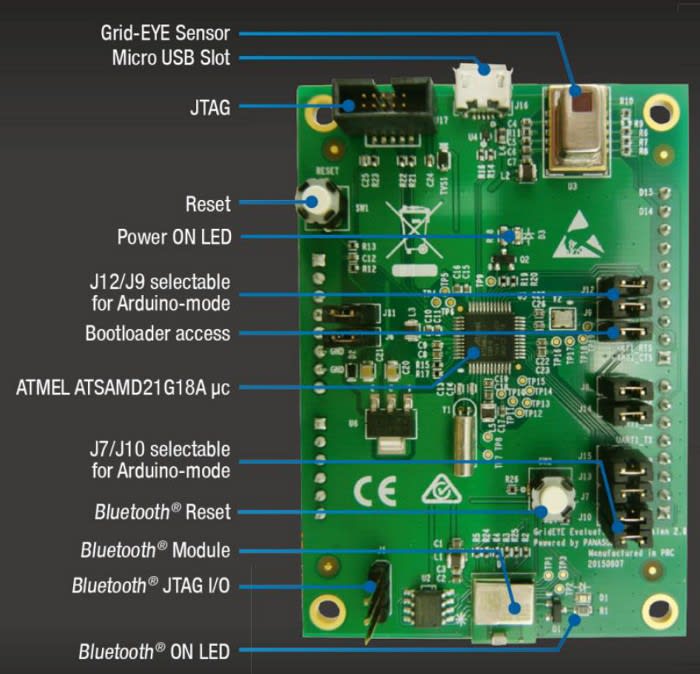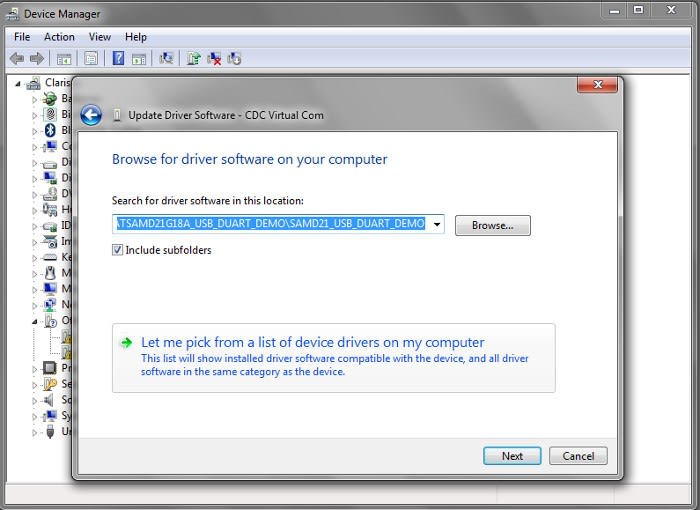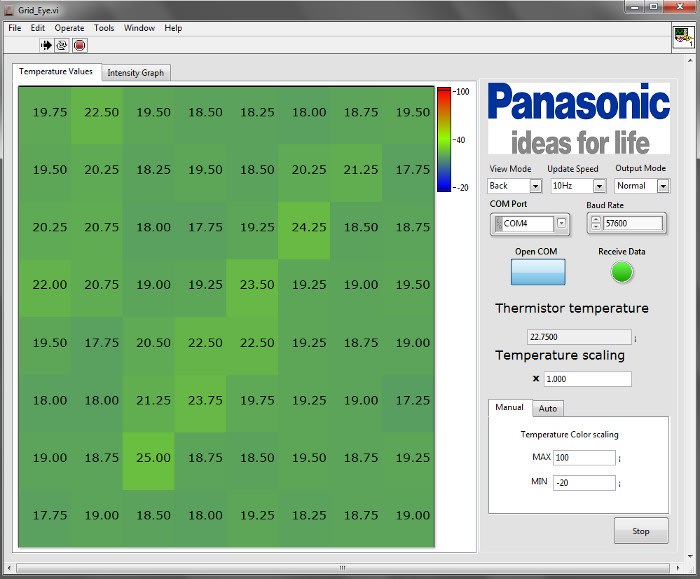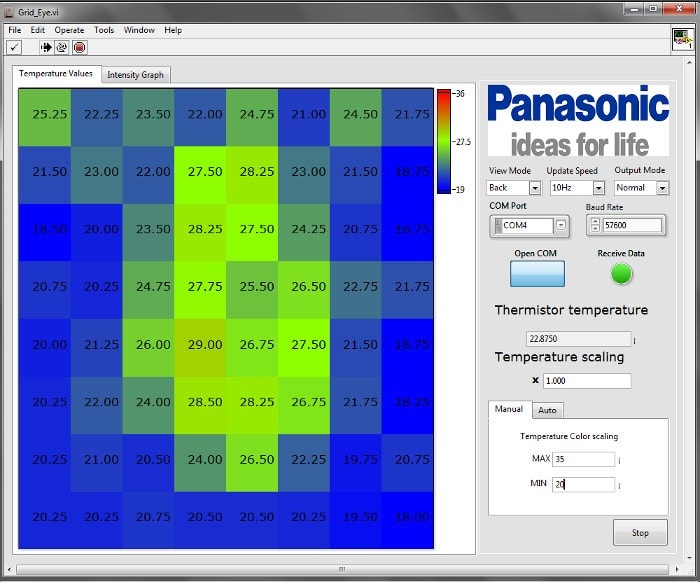A first look at the Grid-EYE Evaluation Kit
Follow articleHow do you feel about this article? Help us to provide better content for you.
Thank you! Your feedback has been received.
There was a problem submitting your feedback, please try again later.
What do you think of this article?
Enabling evaluation and development with the 64-pixel infrared detector.
The Grid-EYE from Panasonic is a compact 8x8 pixel array infrared detector, based on MEMS technology and which provides readings over I2C at up to 10 frames/second. The surface mount package device is available in high and low gain variants, able to measure a temperature range of 0C to 80C (+/- 2.5C accuracy) and -20C to 100C (+/- 3C accuracy) respectively.
Kit contents
The eval kit is comprised of a PCB assembly that integrates a low gain Grid-EYE sensor with an ARM Cortex-M0+ (ATSAMD21G18A) microcontroller featuring 256KB flash and 32KB SRAM, plus a PAN1740 Bluetooth Low Energy module — all in a convenient Arduino shield form factor.
Image source: Quick Start Guide, © Panasonic Automotive and Industrial Systems Europe.
The board includes features such as reset buttons and JTAG headers for both the microcontroller and BLE module, along with jumpers to configure bootloader access and to switch operation between standalone and Arduino compatible modes.
Software installation
32-bit and 64-bit Windows installers for the demonstration software are provided. Upon completing installation on a laptop running Windows 7 Professional 64-bit, I found that the CDC COM port driver had not been properly configured. However, this was soon rectified by downloading the USB Driver ZIP file and extracting this, before updating the driver software via the Windows Device Manager. For further details of how to do this see page 36 of the User Manual (v4.0).
The Dialog Serial Port Service can also be installed on Android and iOS devices to provide a serial connection to the board via the BLE chip.
Demo applications
With setup completed the LabVIEW based — a runtime for this gets installed also — demo application could be started, following which the new COM port selected and the board connected to. At this point temperature data was immediately displayed, with the default colour scaling of -20C to 100C (full device measurement range).
Setting the colour scaling values to a minimum of 20C and maximum of 35C made it much easier to recognise humans, with the above image showing a head centre of frame with these settings.
Using the Android application sensor data could also be received over a Bluetooth Low Energy connection. Although this is really only useful for basic debugging, the Quick Start Guide suggests that more advanced smartphone applications may be in development. It should also be possible to modify the firmware so that the board performs an application-specific function, such as presence detection, providing higher level outputs via BLE, in place of raw sensor values.
Image source: User Guide, © Panasonic Automotive and Industrial Systems Europe.
In Arduino compatibility mode the Grid-EYE sensor interfaces with an Arduino DUE via I2C, while the microcontroller and BLE module are each interfaced with this via UART connections. I didn't get to try out this mode of operation since I did not have an Arduino DUE to hand.
Development
Firmware development on the ATSAMD21 microcontroller is supported using Atmel Studio, with programs downloaded via JTAG cable, or USB with a bootloader. The demo firmware source code — which outputs sensor readings over USB UART — can be found in the ZIP file which is listed as “USB Driver” on the evaluation kit homepage. This includes a linker script which can be configured for JTAG or USB/bootloader use, with details provided in the User Guide.
The aforementioned ZIP file also includes a Grid-EYE API library and accompanying demo program source code. The API is arranged into three levels:
-
Level 1 implements Grid-EYE data acquisition, and transformation of temperature values and data format;
-
Level 2 implements filtering of original data, along with image processing, object detection, and human body recognition;
-
Level 3 implements functions for object detection and object tracking.
Arduino development is obviously supported via the Arduino IDE and the User Guide mentions two libraries, GE_SoftUart and grideye, plus a demonstration “sketch”.
Development on the PAN1740 Bluetooth module is supported using the Keil MDK and RivieraWaves Bluetooth platform.
First impressions
It's easy to imagine how the Grid-EYE sensor could be put to a great many different uses, such as presence detection with a marked improvement on the capability offered by traditional PIR detectors, at a much lower price point and greater convenience than full blown thermal imaging. Along with detection and tracking of other objects, and potential for use in e.g. process control.
The kit makes it possible to rapidly evaluate the Grid-EYE sensor, while also providing numerous options for prototyping applications. Making the kit Arduino compatible is a great feature that will be welcomed by many with experience of this platform, while ability to operate standalone means that you don't have to invest in extra hardware to evaluate the device or develop on ATSAMD21.










